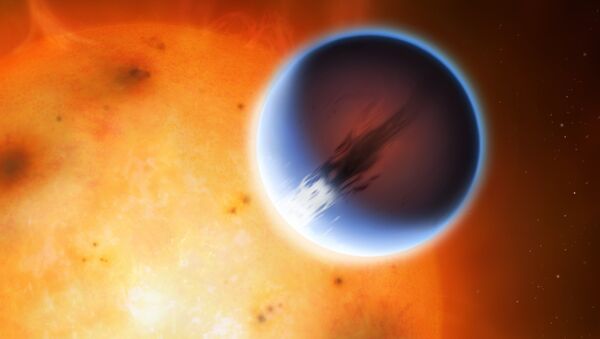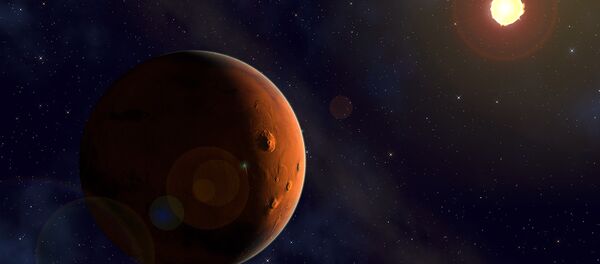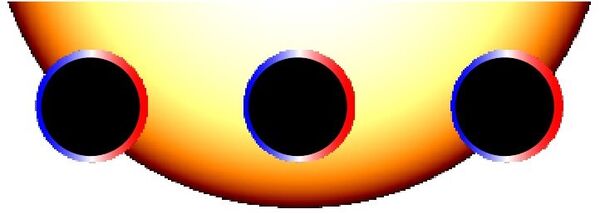The scientists were able to measure the wind on the planet for the first time by measuring the velocities on opposite sides of HD 189733b, using high resolution spectroscopy of the sodium absorption in its atmosphere.
"As parts of HD 189733b's atmosphere move towards or away from the Earth the Doppler effect changes the wavelength of this feature, which allows the velocity to be measured," explained Tom Louden, lead researcher on the project.
"The surface of the star is brighter at the center than it is at the edge, so as the planet moves in front of the star the relative amount of light blocked by different parts of the atmosphere changes. For the first time we've used this information to measure the velocities on opposite sides of the planet independently, which gives us our velocity map."
The researchers calculated the wind velocity on both sides of the planet, and the wind flow around the planet's equator from its heated day side to the night side.
"After correcting for the expected spin of the planet we measure a wind velocity of 5400 mph [8690 km/h] on the blue side, indicating a strong eastward wind flow from the heated day side to the night side of the planet," explain the scientists.
"As we develop the technique further we will be able to study wind flows in increasing detail and make weather maps of smaller planets," said Dr. Peter Wheatley, co-author of the paper on the discovery, published on Wednesday in Astrophysical Journal Letters.
"Ultimately this technique will allow us to image the weather systems on Earth-like planets," explained the astronomer.
The news is the latest on the inhospitality of planet HD 189733b; in April scientists from the Universities of Geneva and Bern reported that the temperature of the planet reaches more than 3000 degrees at high altitudes in its atmosphere.
The planet is known as a 'hot Jupiter' due to its size, which is similar to that of Jupiter, and short distance from its sun; it takes just 2.2 days to orbit its parent star. It is the closest such 'hot Jupiter' to Earth, at a distance of 63 light-years or 600 trillion kilometers away, in the constellation Vulpecula, the 'little fox.'






